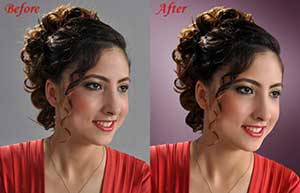Image Masking Services: A Comprehensive Guide
Image masking services play a crucial role in the world of digital image editing, particularly when dealing with complex images that have furry, fuzzy, or hairy edges. This technique is essential for various industries, including advertising agencies, magazines, brochures, pamphlets, and e-commerce platforms. In this guide, we will delve into the intricacies of image masking, explore different masking techniques, and understand the importance of professional image masking services.
What is Image Masking?
Image masking is a Photoshop-based editing service that involves the background removal of subjects with intricate edges that are challenging to handle using the manual drawing of clipping paths. This process ensures that the subject’s delicate details, such as hair or fur, are preserved while the background is effectively removed or replaced.

Image Masking Services
The need for image masking services arises from the demand for high-quality images in various professional fields. Whether it’s for advertising, product catalogs, or digital marketing, having clean and precise images is essential. Here are some reasons why image masking is indispensable:
Enhanced Visual Appeal: By removing distracting backgrounds, the focus remains on the subject, making the image more appealing and engaging.
Professional Quality: Image masking ensures that images meet professional standards, which is crucial for businesses that rely on visual content.
Versatility: Masked images can be used in various contexts, such as websites, brochures, and advertisements, providing a versatile solution for different media.
Techniques of Image Masking
There are several techniques employed in image masking, each suited for different types of images and desired outcomes. These techniques can be broadly categorized into destructive and non-destructive methods.
1. Layer Masking
Layer masking is a non-destructive technique that allows for the selective modification of an image. By applying a mask to a layer, you can hide or reveal parts of the image without permanently altering the original layer. This technique is ideal for images with clear, defined edges and provides flexibility for future adjustments.
Steps for Layer Masking:
- Open the image in Photoshop.
- Select the layer you want to mask.
- Click on the ‘Add Layer Mask’ button at the bottom of the Layers panel.
- Use the Brush tool to paint over the mask, revealing or hiding parts of the image.
2. Alpha Channel Masking
Alpha channel masking is a more complex method used for images with very fuzzy or intricate edges, such as hair. This technique involves creating an alpha channel to adjust the contrast around the subject multiple times until the right color contrast is achieved. Color decontamination is then applied to permanently mask the image and remove the background with precision.
Steps for Alpha Channel Masking:
- Open the image in Photoshop.
- Duplicate the original layer.
- Go to the Channels panel and create a new alpha channel.
- Adjust the contrast and levels to isolate the subject.
- Apply color decontamination to refine the mask.
3. Refine Edge Masking
Refine edge masking is used to enhance the edges of a selection, making it smoother and more accurate. This technique is particularly useful for subjects with soft or intricate edges, such as hair or fur.
Steps for Refine Edge Masking:
- Make a rough selection of the subject using any selection tool.
- Click on ‘Select and Mask’ in the options bar.
- Use the ‘Refine Edge Brush Tool’ to paint over the edges of the subject.
- Adjust the settings for smoothness, feather, contrast, and shift edge to achieve the desired effect.
- Apply the mask to the selection.
4. Color Masking
Color masking involves using color ranges to create masks. This technique is useful when the subject and background have distinct color differences. By selecting specific color ranges, you can isolate the subject and remove the background.
Steps for Color Masking:
- Open the image in Photoshop.
- Go to ‘Select’ > ‘Color Range.’
- Use the Eyedropper tool to select the colors you want to mask.
- Adjust the fuzziness to refine the selection.
- Create a mask from the selection.
- Applications of Image Masking Services
- Image masking services are widely used in various industries to enhance the visual quality of images. Here are some common applications:

1. Advertising Agencies
Advertising agencies rely heavily on high-quality images to create compelling ads. Image masking ensures that the subjects in the images are perfectly isolated from their backgrounds, allowing for seamless integration into different advertising formats.
2. E-Commerce Platforms
For e-commerce platforms, product images play a crucial role in attracting customers. Image masking helps in creating clean, professional-looking product images by removing distracting backgrounds and highlighting the product details.
3. Magazines and Brochures
Magazines and brochures require visually appealing images to capture the reader’s attention. Image masking allows designers to remove unwanted backgrounds and focus on the main subject, making the images more engaging and attractive.
4. Photography Studios
Professional photography studios use image masking to enhance portraits and other photos. By isolating the subject from the background, photographers can apply different effects and create stunning images.
The Process of Image Masking Services
The process of image masking involves several steps, each requiring precision and expertise. Here’s a breakdown of the typical process followed by professional image masking services:
Image Analysis: The first step is to analyze the image to determine the best masking technique to use. This involves assessing the subject, background, and the complexity of the edges.
Selection of Technique: Based on the analysis, the appropriate masking technique (layer masking, alpha channel masking, refine edge masking, or color masking) is selected.
Mask Creation: The mask is created using the chosen technique. This involves careful adjustment of settings and tools to ensure that the subject is accurately isolated from the background.
Refinement: The mask is refined to ensure that all details, especially intricate edges, are preserved. This step may involve multiple iterations of adjustments.
Finalization: Once the mask is perfected, the background is removed or replaced as per the client’s requirements. The final image is then reviewed for quality and accuracy.
Delivery: The completed image is delivered to the client in the desired format. Professional image masking services ensure timely delivery without compromising on quality.
Why Choose Professional Image Masking Services?
While basic image masking can be done using Photoshop, achieving professional-quality results requires experience, skill, and attention to detail. Here are some reasons why you should consider professional image masking services:
Expertise: Professionals have extensive experience in handling complex masking tasks and can deliver high-quality results that meet industry standards.
Accuracy: Professional services ensure that the masking is done with utmost accuracy, preserving intricate details and achieving a seamless look.
Time-Saving: Outsourcing image masking tasks to professionals saves time, allowing you to focus on other important aspects of your business.
Consistency: Professional services provide consistent results across multiple images, ensuring a uniform look and feel for your projects.
Advanced Tools: Professionals use advanced tools and techniques that may not be readily available to individuals, resulting in superior quality images.
Conclusion
Image masking services are essential for achieving high-quality, professional images with intricate edges. Whether it’s for advertising, e-commerce, magazines, or photography, image masking ensures that the subject stands out by removing distracting backgrounds. By leveraging various masking techniques, such as layer masking, alpha channel masking, refine edge masking, and color masking, professionals can deliver precise and accurate results.
Choosing professional image masking services offers numerous benefits, including expertise, accuracy, time-saving, consistency, and access to advanced tools. If you are looking for top-notch image masking services, Clipping World Studio offers comprehensive solutions tailored to your needs. For more information, visit their Image Masking Services page.
By understanding the importance and techniques of image masking, you can make informed decisions about enhancing your visual content, ultimately leading to better engagement and success in your projects.







 GHOST MANNEQUIN
GHOST MANNEQUIN